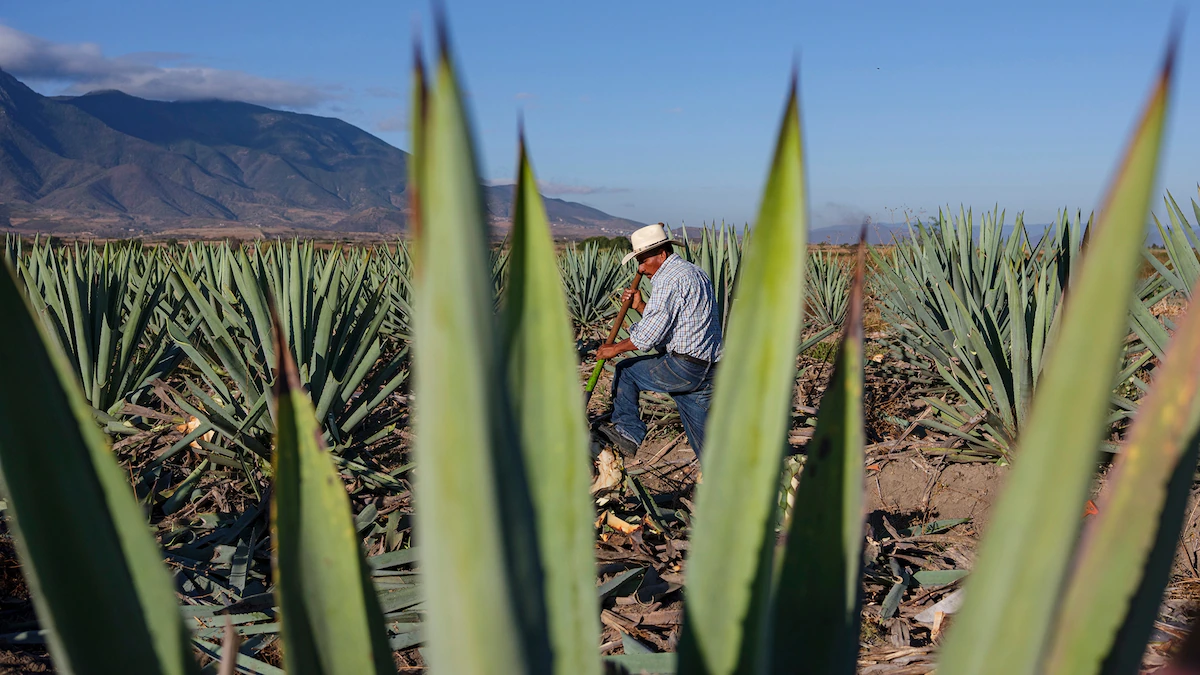Copyright National Geographic

Until recently, Oaxaca’s Costa Chica, or “small coast,” was remote and hard to reach. Known for its famous surf and series of bohemian, countercultural enclaves, this stretch of wild coastline is defined by nature: Migrating whales, endangered sea turtles, some 300 species of endemic birds, phosphorescent lagoons, and impressive Pacific swells. But the relative difficulty of reaching this region of Southern Mexico meant that only the most determined visitors made the trip. While there is an international airport in Puerto Escondido, the largest city on Oaxaca’s northern coast, non-stop flights from the United States were few and far between. Meanwhile, overland travel from Oaxaca City, a UNESCO World Heritage site since 1987, and the coast required a brutal nearly 10-hour bus ride. That changed last year, when a long-awaited superhighway opened, cutting the travel time between the coast and Oaxaca’s capital to just over three hours. For fans of this less-developed Mexican coastline, this new infrastructure is a mixed blessing. It makes the coast more accessible, but also opens it up to increased development and the risk of overtourism. Fortunately, the Costa Chica has long embraced ecotourism and, in 2025, the Australia-based international conservation organization Save the Waves designated Puerto Escondido as the 14th World Surfing Reserve, a status that honors the area’s significance as a surf destination and works to conserve the its natural environment. (See all 25 destinations that made our list of the best places to visit in 2026.) What to do Surfing: There are relatively few surfers on earth who can brave the powerful Pacific break at Zicatela. Famed and feared, the “Mexican Pipeline” is a wave that lures professional big wave riders from around the world. But the area around Puerto Escondido has a number of more accessible breaks that provide opportunities for novice surfers to learn and play, including La Punta (“the Point”). Laguna de Manialtepec: For an encounter with bioluminiscent plankton, those tiny, glowing marine organisms that create a surreal nighttime spectacle, schedule a tour with Lalo Ecotours. Casa Wabi: About a half-hour north of Puerto Escondido, just north of Manialtepec, this sprawling arts complex is set on a largely undeveloped expanse of Oaxacan coastline. Designed by the celebrated Pritzker Architecture Prize-winning architect Tadao Ando, the complex has galleries and studios, hosts arts residencies, and holds events. To visit, schedule a guided tour. Explore nearby towns: South of Puerto Escondido, San Agustinillo, Zipolite and the “magical town” of Mazunte are small countercultural enclaves, each with their own character and appeal. Zipolite has a notable LGBTQ+ scene and a clothing-optional beach, a rarity in Mexico. San Agustinillo is smaller and more laid back, with a casual, beginner-friendly surf school and a handful of modest accommodations and beachfront restaurants. Mazunte is home to the National Turtle Center and a constellation of wellness retreats and yoga centers. When to go November to April is the dry season, when the ocean is calmer and the skies are clearer. Those visiting for the coast’s famed surf should come between the hot, rainy period period between April and October, when the Pacific swells rolls in and there are far fewer tourists and lower prices. The downside to coming then is the risk of hurricanes, like Hurricane Erick, which hit the coast in June, 2025. Peak turtle-hatching season is from August to November, while whale-watching is best from November to March. To see the bioluminescence at Laguna de Manialtepec, the plankton is most abundant in the late rainy season, on or around the new moon, when there is less light pollution. Where to eat Where inland Oaxaca is known for its rich, complex moles, chocolate, edible insects, and a strong indigenous influence, the coast’s cuisine is spicier, fresher, and more seafood-centric. Beachfront palapa (palm-thatched roofs) restaurants buy the day’s catch from the local panga fisherman and serve their dishes at plastic tables, feet-in-the-sand. Sal de Mar: In downtown Puerto Escondido, this unpretentious and affordable seafood spot serves excellent Baja-style fish tacos, ultra-fresh sashimi, spicy aguachile, and octopus hamburgers. It also offers a two-for-one happy hour on its tasty mezcalitas (fruity mezcal margaritas). La Batata Sabor Argentino: For something different, indulge in Argentine-style empanadas, grilled steak with chimichurri and grilled vegetables, and alfajores (a dulce de leche-filled short-bread cookie) in La Batata’s patio dining area, where there’s often live music to accompany the live fire. Almoraduz: For a sophisticated, splurge-worthy, special occasion meal, this Michelin-recognized restaurant serves an eclectic menu that marries Mexican ingredients with international technique: Fish of the day with a housemade shrimp mole, a confit pork jowl tostada with grasshoppers, or a black risotto with shellfish and huitlacoche (so-called Mexican truffle, or corn fungus). Getting around Getting to the Costa Chica has gotten far easier with the completion of the new Barranca Larga-Ventanilla Highway. For those who want to experience Oaxaca’s interior as well as its coast, this toll road means transit between the two is now easy, fast, and affordable via the five-times-daily ADO bus service, a 3.5-hour trip. To fly into Puerto Escondido International Airport (PXM), flights remain relatively limited. But beginning in late 2025, there will be two non-stop services from the United States: Existing United Airlines route via Houston will be joined by an American Airlines flight from Dallas-Fort Worth. Otherwise, most people arriving by air will need to pass through either Mexico City, Guadalajara, or Monterrey. While a car isn’t necessary within Puerto Escondido (taxis, as well as Didi, are abundant), renting one can make the coast easier and more enjoyable to explore.



